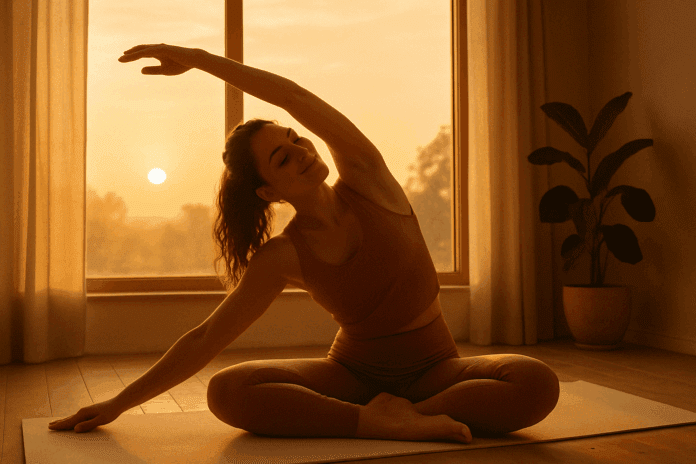Menstrual cramps, medically known as dysmenorrhea, are a common and often debilitating symptom experienced by many individuals during their menstrual cycle. While over-the-counter medications and heating pads are frequently relied upon for relief, an increasing body of research and anecdotal evidence points to the remarkable role that physical activity can play in alleviating these symptoms. For those seeking natural, drug-free methods to ease menstrual pain, incorporating exercise into their monthly routine may offer not only relief but also long-term health benefits. This article explores how stretching, walking, and other gentle workouts may reduce menstrual pain and improve overall well-being.
You may also like : Best Stretches for Sore Legs and Tight Thigh Muscles: How to Relieve Upper Leg Pain Safely and Naturally
Understanding the Physiology of Menstrual Cramps
To appreciate how exercise for menstrual pain can be effective, it’s essential to first understand what causes cramps in the first place. Menstrual cramps are triggered by the release of prostaglandins—hormone-like substances that prompt the uterus to contract in order to shed its lining. Higher levels of prostaglandins can lead to stronger, more painful contractions. These uterine contractions can restrict blood flow and cause inflammation, leading to the throbbing or aching pain commonly associated with menstruation.
Some people may also experience secondary dysmenorrhea, which is menstrual pain caused by underlying conditions such as endometriosis, fibroids, or pelvic inflammatory disease. In either case, the pain can range from mild discomfort to severe, life-disrupting agony. While the use of medication can manage symptoms, many individuals are now turning toward holistic methods—particularly movement-based approaches—as a way to reclaim agency over their health. This is where questions like “can exercise help cramps” become especially relevant.
Why Movement Matters: The Science Behind Exercise and Pain Relief
It may seem counterintuitive to move your body when you’re in pain, but the act of exercising—even lightly—can release a cascade of biochemical responses that help reduce the severity of menstrual cramps. Physical activity increases blood circulation, which helps to oxygenate the muscles and flush out the prostaglandins responsible for pain. Additionally, movement triggers the release of endorphins, the body’s natural painkillers, which can serve as a counterbalance to discomfort.
Studies have shown that those who engage in regular physical activity report less severe menstrual pain over time. This could be due to improved overall muscle tone, reduced inflammation, and a strengthened cardiovascular system that more efficiently delivers oxygen and nutrients throughout the body. In this light, exploring exercises to do on your period can become not just a question of symptom management but of proactive, long-term wellness.
The Role of Stretching in Menstrual Pain Relief
Stretching exercises for cramps may seem deceptively simple, but their impact on muscular tension and circulation can be profound. Targeted stretching helps release tight muscles in the pelvic region, lower back, and abdomen—areas most commonly affected during menstruation. Additionally, stretching can activate the parasympathetic nervous system, promoting a state of relaxation and reducing perceived pain.
One of the most effective approaches to using stretching exercises for cramps is to focus on movements that open up the hips and gently mobilize the lower spine. Poses commonly found in yoga, such as Child’s Pose, Reclined Bound Angle Pose, and Cat-Cow Stretch, are often recommended by fitness professionals and medical practitioners alike. These movements help reduce abdominal tightness and support better alignment in the pelvic area, which can ease tension and reduce cramp severity.
Practicing a daily stretching routine throughout the menstrual cycle—not just during menstruation—can also improve flexibility and pelvic mobility, which may contribute to reduced discomfort in subsequent cycles. For individuals wondering, “does exercise help menstrual cramps,” stretching offers an accessible and low-impact starting point.
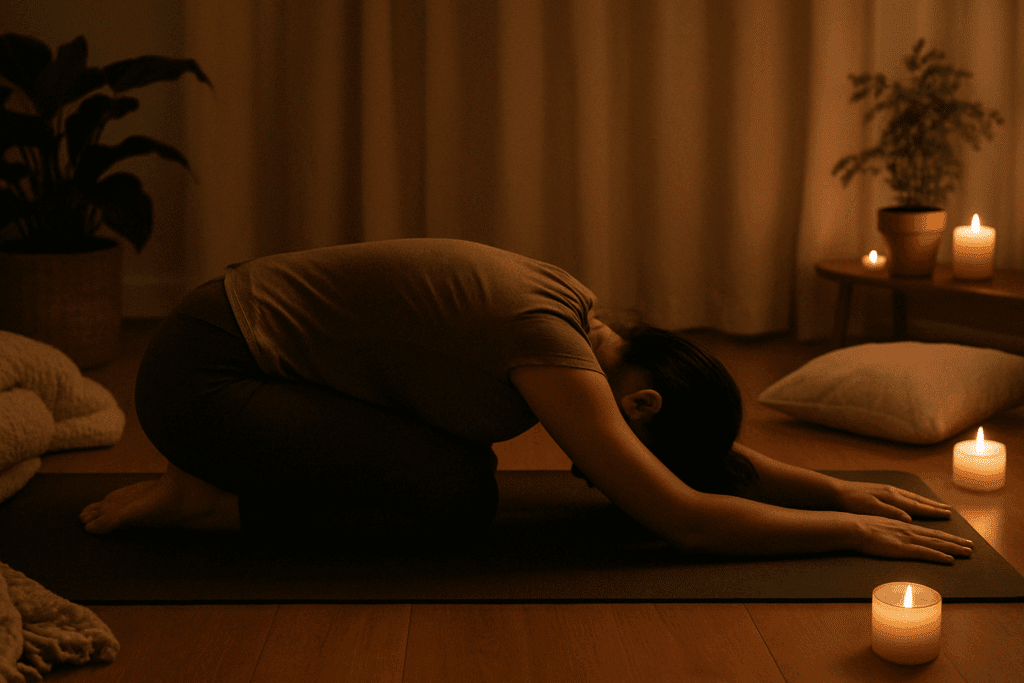
The Hormonal Feedback Loop: How Exercise Influences Menstrual Regulation
When considering how exercise helps menstrual cramps, it’s important to understand its broader role in hormonal balance. Physical activity can regulate the endocrine system, which controls the production and fluctuation of hormones throughout the menstrual cycle. Regular exercise has been shown to stabilize levels of estrogen and progesterone, which can lead to more predictable and less painful periods.
Additionally, exercise influences insulin sensitivity and cortisol levels. Insulin resistance has been associated with conditions like polycystic ovary syndrome (PCOS), which often includes painful or irregular periods. By improving insulin function, exercise helps reduce systemic inflammation and promote a healthier hormonal profile. Similarly, consistent moderate-intensity workouts lower cortisol (the stress hormone) levels, which can otherwise exacerbate period pain through increased tension and inflammation.
For those wondering “does exercise help menstrual cramps,” it’s crucial to understand that the benefits extend far beyond symptom management during menstruation—they include long-term menstrual cycle regulation and resilience to stress, both of which directly impact the severity and duration of cramps.

Walking: A Low-Impact, High-Benefit Activity for Menstrual Cramps
Does walking help with period cramps? Evidence suggests that it very well might. Walking is a low-impact aerobic exercise that can stimulate circulation, improve mood, and relieve muscle tension without placing too much strain on the body. For those who may be experiencing fatigue or low energy during their period, walking offers a gentle yet effective way to stay active.
As a form of cardio, walking increases endorphin production and enhances blood flow, which in turn may alleviate the pain and bloating commonly associated with menstruation. It can also have mood-boosting effects, helping to counteract the irritability, anxiety, or depression that sometimes accompanies hormonal fluctuations. Importantly, walking requires no special equipment or training, making it one of the most accessible exercises for cramps.
Incorporating a brisk 20- to 30-minute walk into your daily routine—even during the heaviest days of menstruation—can help regulate your body’s natural rhythms and improve your response to pain. For some, the simple act of walking outdoors may also provide additional therapeutic benefits through exposure to natural light and fresh air, amplifying the overall sense of well-being.

Yoga: A Mind-Body Approach to Menstrual Pain Relief
Yoga is often recommended as one of the best forms of exercise for period pain due to its combined physical, mental, and emotional benefits. Unlike more intense forms of exercise, yoga emphasizes controlled breathing, mindfulness, and gradual movement, which can help create a calm environment both internally and externally. As such, yoga addresses not just the physical symptoms of menstrual cramps, but also the emotional stress that often exacerbates them.
Many yoga poses are specifically designed to relieve lower back pain, stretch the abdominal muscles, and relax the hips. Poses such as Supine Twist, Legs-Up-the-Wall, and Seated Forward Bend can be particularly effective. These poses not only increase flexibility but also promote lymphatic drainage and digestive function, both of which can be compromised during menstruation. Because yoga can be easily modified, it accommodates varying energy levels and pain thresholds, making it one of the most adaptable workouts for menstrual cramps.
Furthermore, consistent yoga practice has been shown to regulate hormonal fluctuations and reduce the intensity of menstrual symptoms over time. By incorporating yoga into your lifestyle, you may find long-term improvements in menstrual health and overall physical resilience. This is another strong indicator supporting the idea that exercise for menstrual pain can yield sustained benefits.
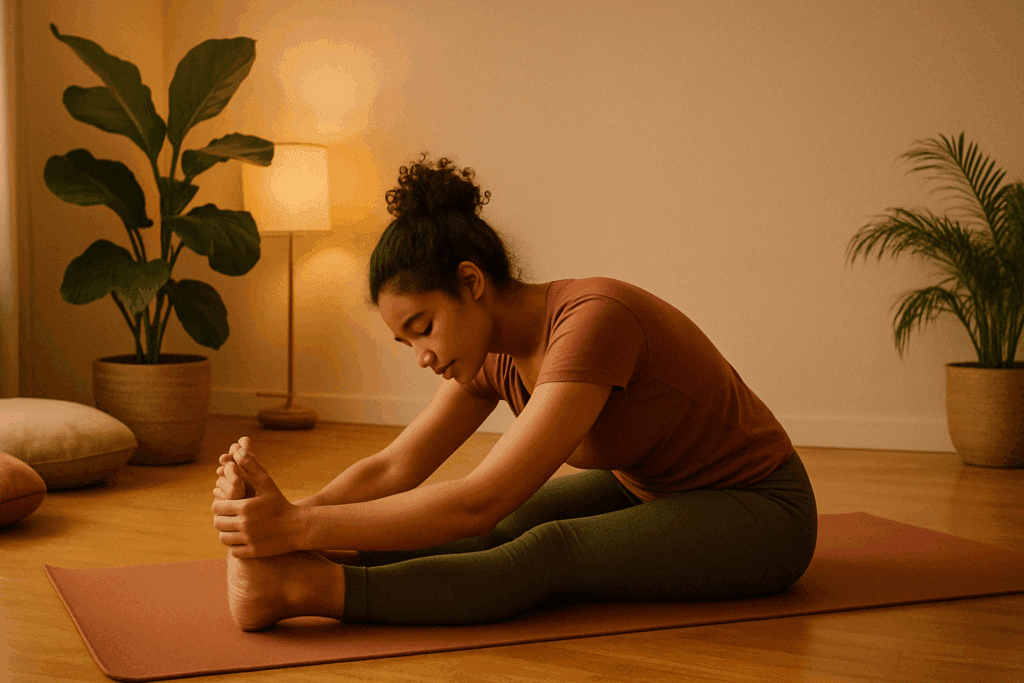
The Role of Breathwork and Pelvic Floor Engagement
While commonly associated with core strengthening or postpartum recovery, pelvic floor exercises can also be relevant for managing menstrual cramps. These muscles support the uterus, bladder, and rectum, and their function is intricately connected with abdominal pressure and pelvic alignment.
Incorporating breathwork with pelvic floor engagement—such as in practices like diaphragmatic breathing, hypopressive techniques, or certain Pilates sequences—can help relax the lower abdominal area and reduce painful tension. Controlled breathing helps activate the parasympathetic nervous system, promoting relaxation and improving blood flow to the reproductive organs. This technique is especially effective for individuals with secondary dysmenorrhea caused by endometriosis or fibroids, where muscle guarding and inflammation around the uterus may be more pronounced.
Adding these practices to your routine reinforces the idea that exercise for menstrual pain can involve more subtle, internal forms of movement—ones that focus not just on muscles and joints, but on breath and nervous system regulation as well.
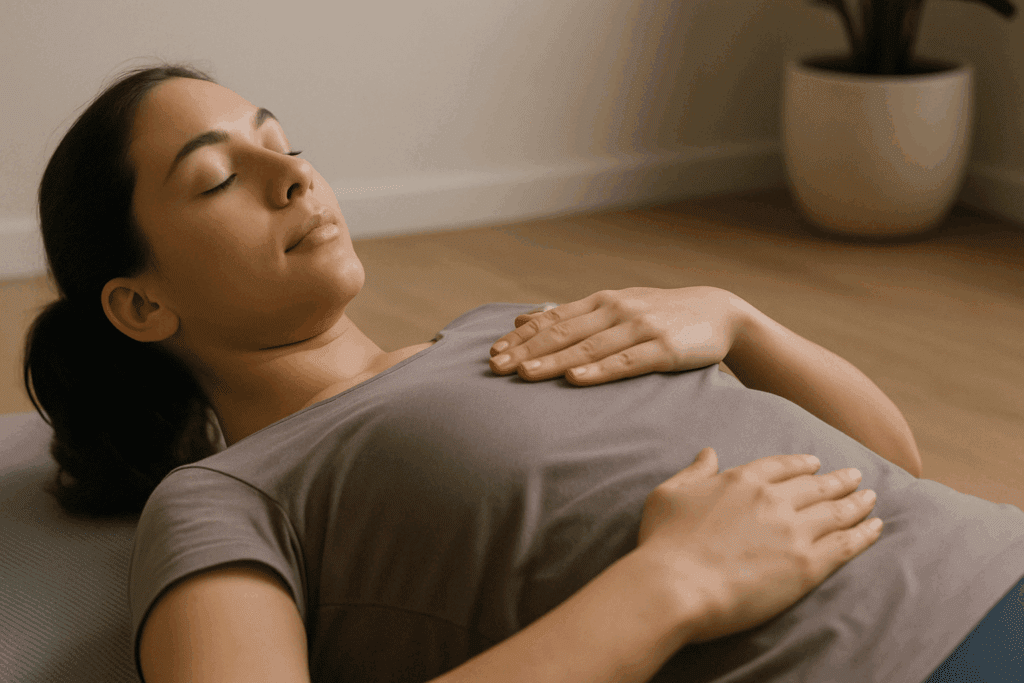
Pilates and Core Engagement for Lower Abdominal Support
While high-intensity Pilates may not be suitable during periods of acute cramping, gentle core-focused exercises can offer relief by strengthening the muscles that support the lower abdomen and pelvis. These muscles, when strong and flexible, help stabilize the lower spine and improve posture, potentially reducing the severity of cramps caused by musculoskeletal imbalances.
Low-impact Pilates routines often include controlled breathing and precise movements that align with the body’s natural rhythm. These exercises are designed to build core strength without overexerting the muscles, making them a suitable choice for those seeking exercises to do on your period. Additionally, improved core strength may help alleviate chronic lower back pain, a common companion to menstrual discomfort.
A stronger core also contributes to better alignment and posture, which can ease strain on the lower back and abdominal area during menstruation. In this context, Pilates becomes not just a tool for fitness but a valuable component of a comprehensive strategy to manage period-related discomfort.
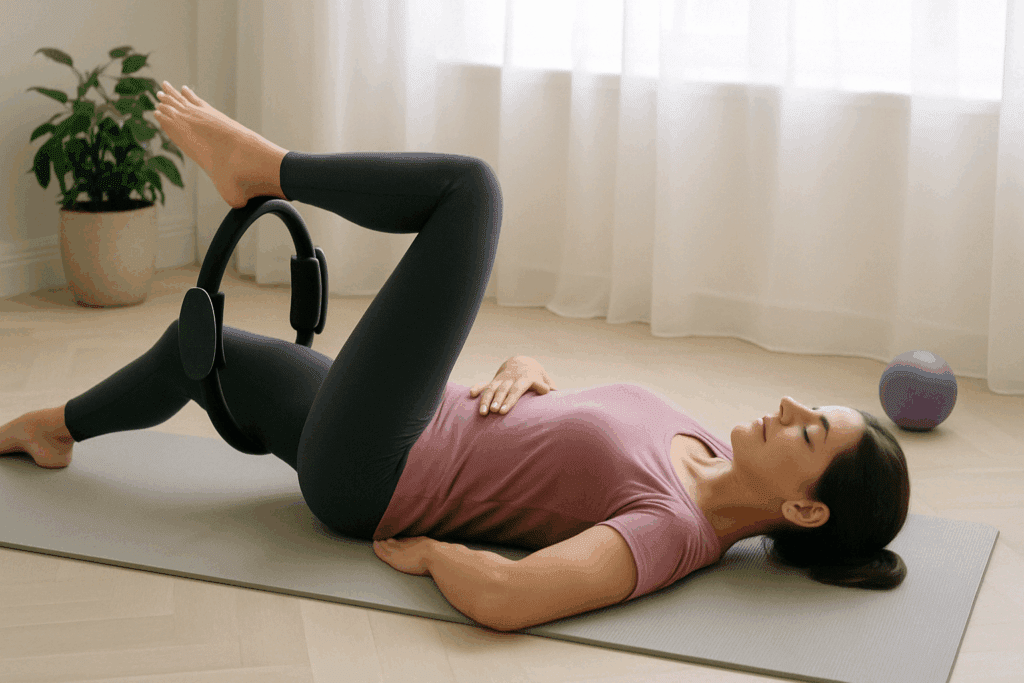
The Psychological Benefits of Exercise During Menstruation
While the physical benefits of exercise during menstruation are well documented, the psychological advantages are equally compelling. Hormonal fluctuations can significantly impact mood, leading to increased irritability, anxiety, or feelings of depression. Physical activity, especially in the form of aerobic exercise or rhythmic movement, has been shown to elevate serotonin and dopamine levels—neurotransmitters that play a critical role in mood regulation.
Engaging in exercise during your period can foster a sense of control and empowerment. Many individuals report feeling more grounded and in tune with their bodies when they remain active throughout their cycle. This sense of embodiment can counteract the societal narratives that frame menstruation as a time of weakness or limitation. For those exploring whether exercise helps cramps, it’s important to consider not only the alleviation of physical symptoms but also the boost in mental resilience and self-efficacy.
Moreover, physical movement can serve as a meditative practice, providing mental clarity and reducing stress levels. Whether it’s through yoga, walking, or light strength training, regular movement cultivates a mind-body connection that can transform the menstrual experience from one of distress to one of self-care and introspection.
Cultural and Historical Approaches to Movement During Menstruation
Across different cultures and time periods, the role of physical activity during menstruation has varied widely, influenced by beliefs about female health, taboos, and social roles. In traditional Chinese medicine (TCM), for example, menstruation is viewed as a time when “qi” or life energy should be preserved, and vigorous movement is discouraged. However, TCM still encourages gentle stretching and movement of the hips to maintain the flow of energy and blood.
In contrast, ancient Egyptian and Greek medical texts viewed menstrual movement differently. Some believed that regular physical activity, such as dancing or bathing in warm water, could “open” the body and facilitate the smooth release of menstrual blood. In many Indigenous cultures, menstruation is seen as a sacred time for rest and reflection, yet some rituals include specific forms of movement or dance that align with lunar or seasonal cycles.
These cultural views provide valuable insights for those seeking exercises to do on your period. Instead of rigidly adhering to one approach, individuals might benefit from a cyclical view of movement—choosing different modalities depending on where they are in their cycle, their energy level, and their cultural or personal values around menstruation.
Temperature-Sensitive Workouts: Leveraging Heat and Cold for Pain Relief
Another advanced strategy in exercise for period pain involves the integration of temperature therapy with movement. Warm environments, such as heated yoga studios or infrared saunas used before stretching sessions, can promote muscle relaxation and improve flexibility. The heat increases blood flow and allows for a greater range of motion, which may help in alleviating cramping.
Conversely, some individuals find relief from cold exposure post-exercise—such as through cold compresses or brief cold showers—which can reduce inflammation and swelling in the lower abdominal region. Alternating between heat and cold modalities alongside low-impact exercise creates a synergistic effect, offering both immediate relief and longer-term pain reduction.
This dual approach can be particularly useful for those experiencing secondary symptoms like lower back pain, leg aches, or gastrointestinal distress during menstruation, expanding the conversation around whether exercise helps cramps to include complementary, sensory-based interventions.
Strength Training: Gentle Resistance Workouts During Your Period
Strength training may not be the first approach that comes to mind when dealing with cramps, but light resistance exercises can be both safe and effective when done with proper technique and awareness. Strengthening major muscle groups can improve overall circulation and reduce muscle tension, both of which contribute to pain relief.
Gentle resistance training using body weight, resistance bands, or light free weights can activate the stabilizing muscles around the hips, abdomen, and lower back. This type of workout for menstrual cramps can help maintain muscular balance and reduce the risk of postural compensation, which sometimes worsens cramping. Additionally, building strength contributes to better overall health and can reduce the long-term severity of menstrual symptoms.
It’s important to listen to your body and adjust your routine accordingly. On days when cramps are more intense, consider focusing on mobility exercises, foam rolling, or stretching instead. On lighter days, strength training can be a powerful addition to your menstrual wellness toolkit.
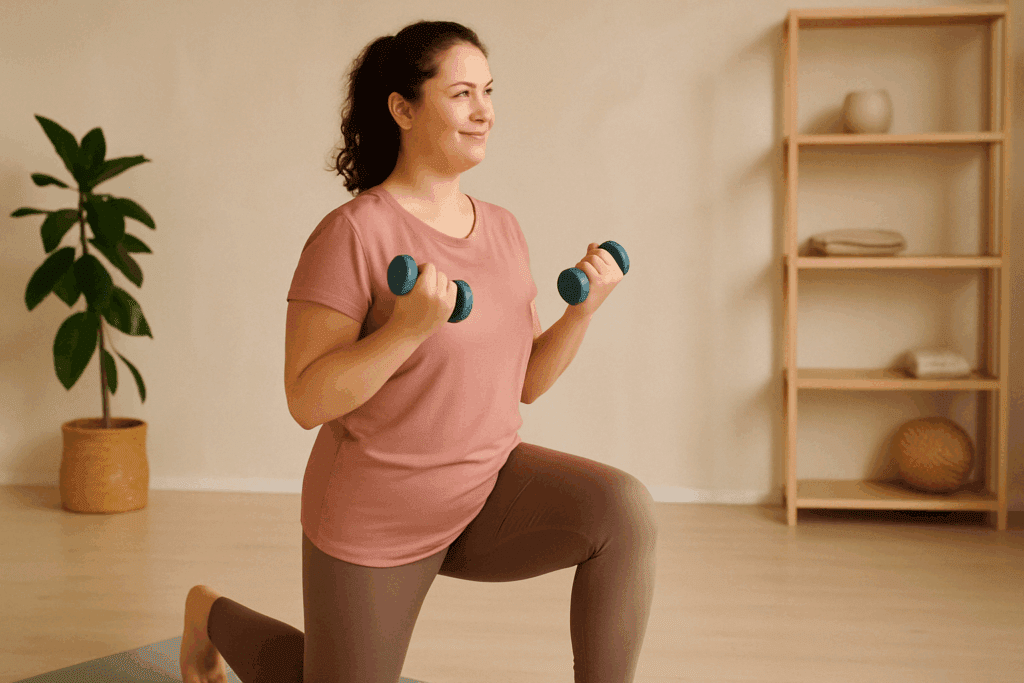
The Importance of Consistency and Listening to Your Body
One of the most important aspects of using exercise for menstrual pain is consistency. While a single workout may provide temporary relief, long-term improvements are more likely to be seen when physical activity is a regular part of your lifestyle. Developing a consistent routine can help regulate hormonal patterns, improve cardiovascular health, and enhance muscular resilience, all of which contribute to less painful periods.
However, consistency should not come at the cost of self-awareness. Listening to your body is crucial during menstruation. Energy levels can vary dramatically from day to day, and it’s important to choose exercises for cramps that feel appropriate for your current physical and emotional state. This could mean opting for a gentle yoga session one day and a brisk walk the next. The goal is to support your body, not to push it beyond its limits.
Staying attuned to your needs also helps prevent injury and burnout. If a particular movement feels uncomfortable or exacerbates your symptoms, modify it or replace it with a gentler alternative. By developing an intuitive relationship with your body, you can use exercise not just as a remedy but as a lifelong ally in menstrual health.
Reframing Menstruation Through Movement: A Sociological Perspective
Despite growing awareness, the stigma around menstruation persists in many cultures, often discouraging open conversation and movement during periods. This reluctance can lead to physical inactivity, isolation, and a sense of disempowerment. However, by reframing menstruation as a time for intentional movement and restorative exercise, individuals can reclaim agency over their bodies.
Group fitness classes specifically designed for menstrual health—such as period-friendly yoga, restorative dance therapy, or pelvic mobility workshops—are gaining popularity and helping to normalize menstruation in public spaces. These initiatives foster community, reduce shame, and validate individual experiences.
When people begin to view exercise for menstrual pain as a form of self-care rather than an obligation, it shifts the cultural narrative toward one of strength and body literacy. Movement becomes a tool not just for symptom relief, but for identity formation, emotional processing, and self-expression.
Frequently Asked Questions: Exercise and Menstrual Cramps
1. Can exercise help cramps even if my symptoms vary each month?
Yes, exercise can help cramps even when monthly symptoms fluctuate in severity. The body responds positively to consistent movement over time, building resilience that may reduce pain even during more intense cycles. Because menstrual symptoms are influenced by hormonal variations, adopting a flexible exercise approach—adjusting intensity and type based on your current needs—can optimize relief. Regular physical activity helps maintain muscle tone and promotes efficient blood flow, which is beneficial regardless of how severe your cramps are in any given month. Individuals often find that over time, the cumulative effects of gentle, targeted movement result in less dramatic pain spikes during menstruation.
2. What are the best types of exercises to do on your period if you’re feeling fatigued? When you’re dealing with fatigue during menstruation, restorative movement is often more effective than intense workouts. Gentle yoga flows, light walking, and stretching exercises for cramps can provide pain relief without depleting your energy further. Breath-centric practices like tai chi or restorative Pilates allow for mindful engagement with your body while easing abdominal tension. Doing these exercises to do on your period can reduce bloating and improve circulation, even on days when motivation is low. The key is to prioritize comfort and fluidity, rather than adhering to high-impact routines.
3. Does walking help with period cramps more than other forms of cardio?
Walking is unique among cardio exercises in that it activates large muscle groups without overstressing the nervous system, making it especially effective for those wondering, “does walking help with period cramps?” Unlike running or cycling, which may elevate cortisol levels, walking promotes a parasympathetic state that supports relaxation and blood flow. It can also be done outdoors, which offers the additional benefit of exposure to natural light, known to improve mood and reduce menstrual-related irritability. Although other forms of cardio may also be helpful, walking remains a preferred choice for many due to its accessibility and gentle impact on the body. Over time, incorporating daily walks can play a key role in reducing cramp severity.
4. Is there a connection between core strength and reduced menstrual pain?
There is growing evidence suggesting that improved core strength can contribute to lessening menstrual discomfort. The muscles in your abdominal and pelvic regions work to support internal organs, including the uterus. A targeted workout for menstrual cramps that strengthens the transverse abdominis, obliques, and lower back may improve posture and reduce the mechanical strain that exacerbates cramping. Additionally, enhanced core stability improves neuromuscular coordination, which can lead to more efficient muscular contractions during menstruation. By reinforcing the musculoskeletal system, individuals may find that strong core muscles provide a natural buffer against pain.
5. Can stretching exercises for cramps offer benefits beyond pain relief?
Absolutely. Stretching exercises for cramps can improve more than just discomfort—they support lymphatic circulation, reduce anxiety, and even promote hormonal balance. Poses that open the hips and elongate the spine encourage better posture and alignment, which may minimize chronic pelvic tension. Over time, a consistent stretching routine may help regulate the nervous system’s pain response, making your body more tolerant to uterine contractions. These exercises also foster body awareness and relaxation, making them a valuable tool not only for pain relief but for whole-body menstrual well-being. When paired with deep breathing, they can create a full-body experience that counteracts both physical and emotional stress.
6. How does regular movement impact future menstrual cycles?
Regular movement creates a feedback loop that positively influences upcoming menstrual cycles. As your cardiovascular and musculoskeletal systems grow stronger and more efficient, the body becomes better equipped to handle inflammatory processes linked to menstruation. Engaging in a consistent workout for menstrual cramps builds long-term resilience and may reduce the need for pharmaceutical interventions. Many individuals report shorter and less painful cycles after maintaining an exercise regimen that includes both aerobic and flexibility training. Importantly, these changes may also reflect broader improvements in hormonal regulation, metabolic health, and stress tolerance.
7. Does exercise help cramps differently for those with conditions like endometriosis or PCOS?
While exercise benefits most individuals with menstrual cramps, those with endometriosis or PCOS may experience unique outcomes. For example, individuals with endometriosis may find that low-impact movement and exercises for cramps focused on relaxation—like somatic stretching or aquatic therapy—offer the most relief. In contrast, those with PCOS might benefit from more structured strength training and aerobic exercise to support insulin sensitivity and hormonal balance. In both cases, consistency and personalization are critical. Consulting with a healthcare provider can help tailor a plan that safely integrates exercise for menstrual pain without exacerbating other symptoms.
8. What role does exercise play in emotional regulation during menstruation?
Exercise has profound effects on emotional health, especially during the hormonal fluctuations of the menstrual cycle. Movement stimulates endorphin production, which can elevate mood and reduce feelings of anxiety, commonly associated with PMS. Certain exercises to do on your period—like rhythmic walking or gentle swimming—can even function as moving meditations, helping to calm mental chatter. Additionally, movement fosters a sense of agency, reinforcing the idea that you can influence your experience of discomfort through action. This psychological shift often enhances the overall perception of control and empowerment during menstruation.
9. How can individuals track the effectiveness of their workout for menstrual cramps?
Tracking progress involves more than just noting pain levels. Journaling your menstrual cycle in tandem with your workout routine can help identify patterns and refine your approach. Apps designed to track symptoms, mood, and exercise provide valuable insights into which types of movement work best during different phases of the cycle. For example, you may find that exercise for period pain is more effective when it includes yoga during menstruation and strength training during the follicular phase. Paying attention to energy levels, sleep quality, and recovery rates also helps create a comprehensive picture of what works best for your body.
10. Are there any emerging fitness trends specifically addressing exercise for menstrual pain?
Yes, several innovative fitness trends now cater to those managing menstruation-related discomfort. Period-aware training programs—offered by some gyms and digital platforms—adjust exercise intensity and modality based on hormonal phases. These programs combine exercises for cramps with hormone-informed strength and recovery sessions. Wearable technology is also evolving to track ovulation, temperature, and activity, helping users understand how their cycle affects physical performance. Additionally, group classes focused on cycle syncing and pelvic floor health are emerging in wellness communities, reflecting a growing shift toward inclusive, menstrual-positive fitness.
Conclusion: Empowering Your Menstrual Health with Movement
Understanding how and why exercise for menstrual pain works opens up empowering new possibilities for managing discomfort naturally and effectively. The idea that physical activity can help alleviate period symptoms is no longer anecdotal—it’s supported by science and increasingly embraced by healthcare professionals. Whether through stretching exercises for cramps, gentle walking, or a customized workout for menstrual cramps that includes yoga or Pilates, movement offers a holistic pathway to relief.
Incorporating these practices into your monthly rhythm can significantly improve not only how you experience your period but also your overall well-being. The answer to questions like “can exercise help cramps” and “does exercise help menstrual cramps” is a confident yes—when the approach is gentle, consistent, and attuned to your body’s needs. As more people adopt this integrated view of menstrual health, we can shift the narrative around menstruation from one of inconvenience and pain to one of strength, insight, and vitality.
So the next time cramps threaten to derail your day, consider taking a few minutes to stretch, go for a walk, or engage in mindful movement. These small, intentional acts can have a profound impact—not only in easing discomfort but in reconnecting you with your body in a powerful, positive way.
Was this article helpful? Don’t let it stop with you. Share it right now with someone who needs to see it—whether it’s a friend, a colleague, or your whole network. And if staying ahead on this topic matters to you, subscribe to this publication for the most up-to-date information. You’ll get the latest insights delivered straight to you—no searching, no missing out.
Further Reading:
Exercises for Period Cramp Pain Relief: What Physical Therapists Recommend

